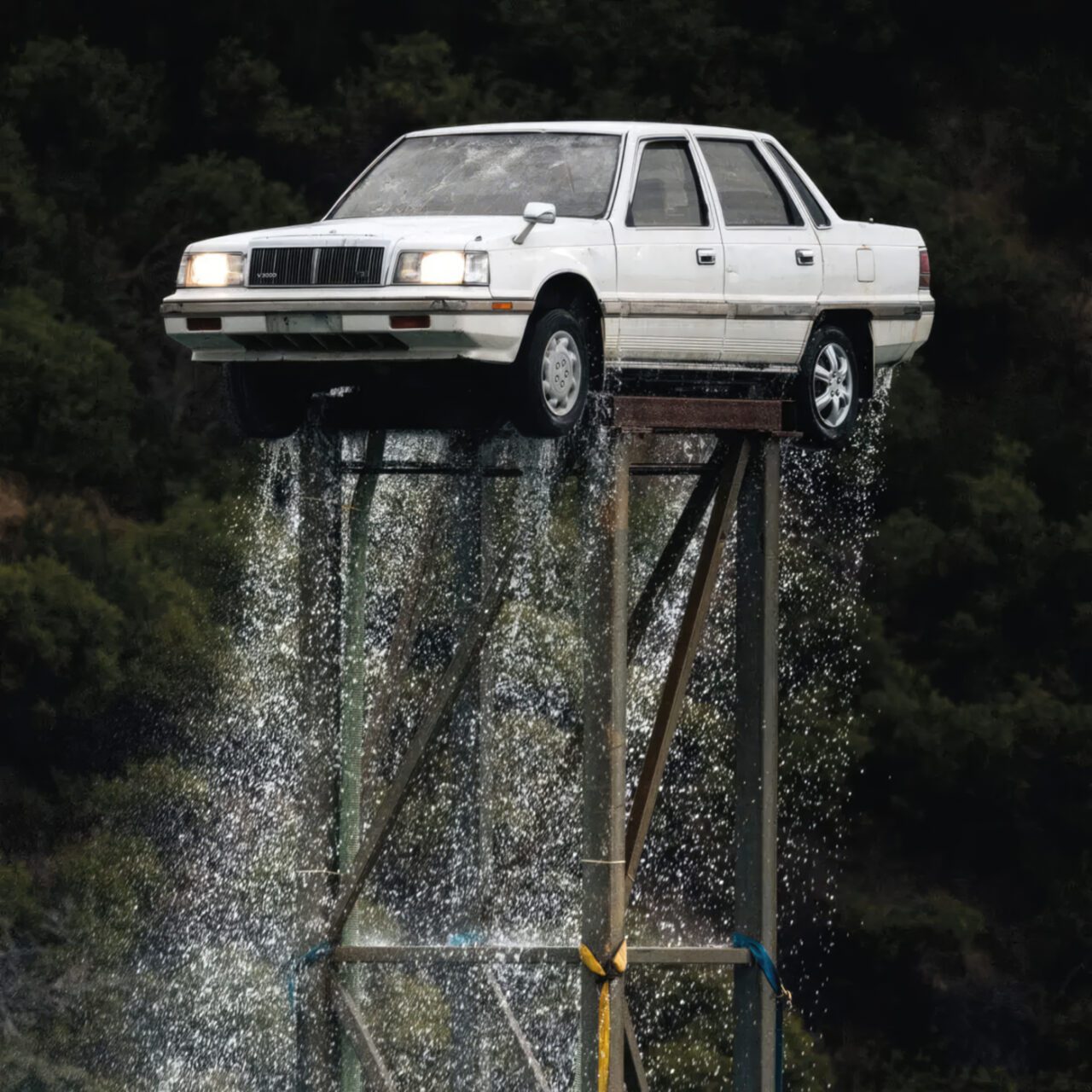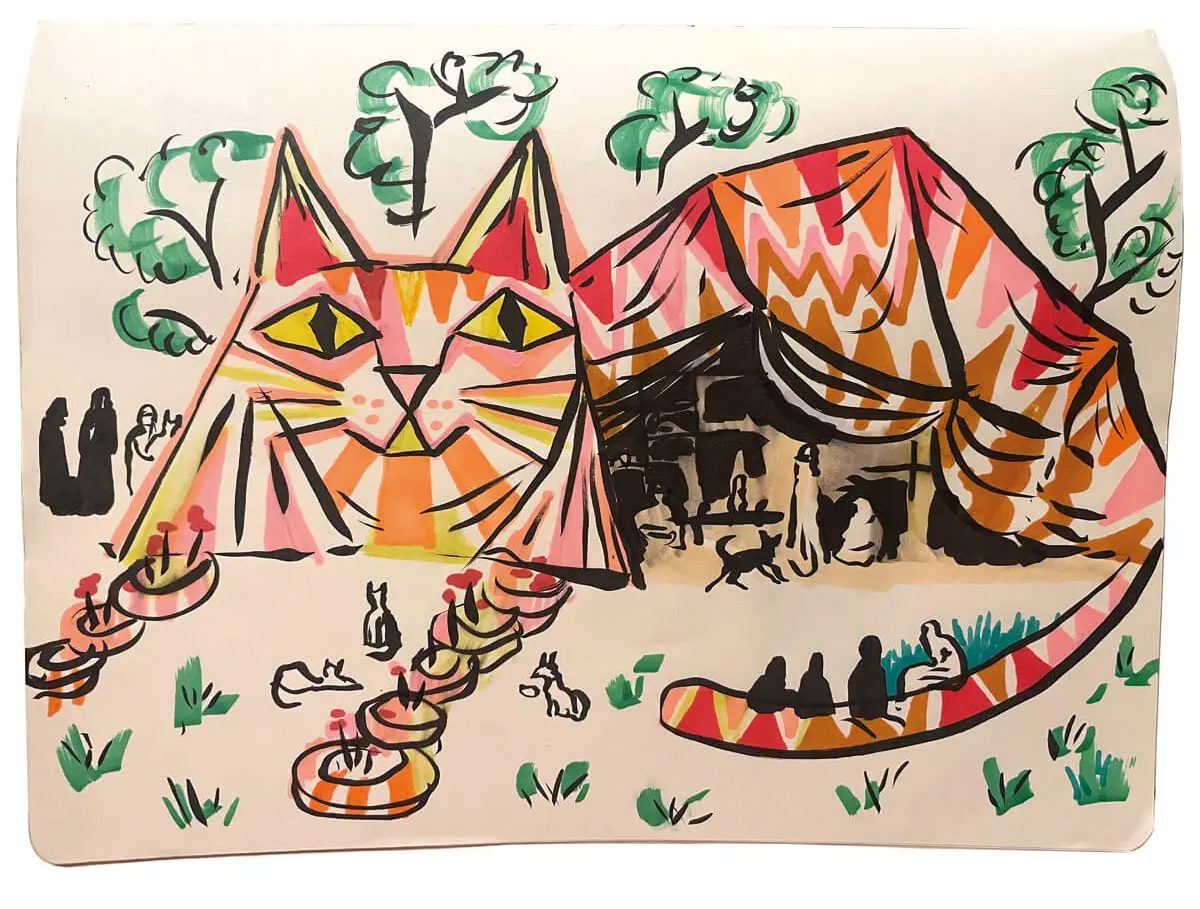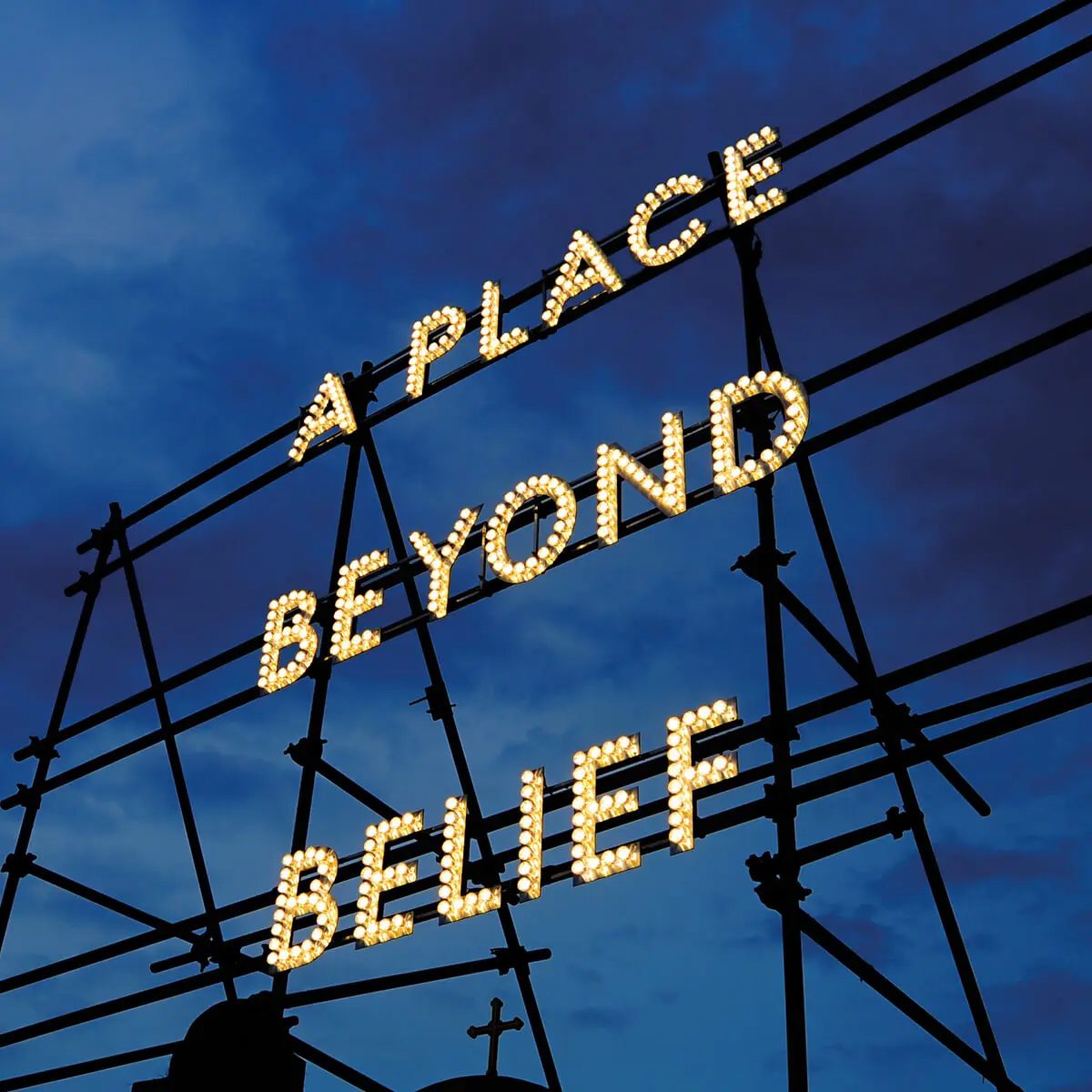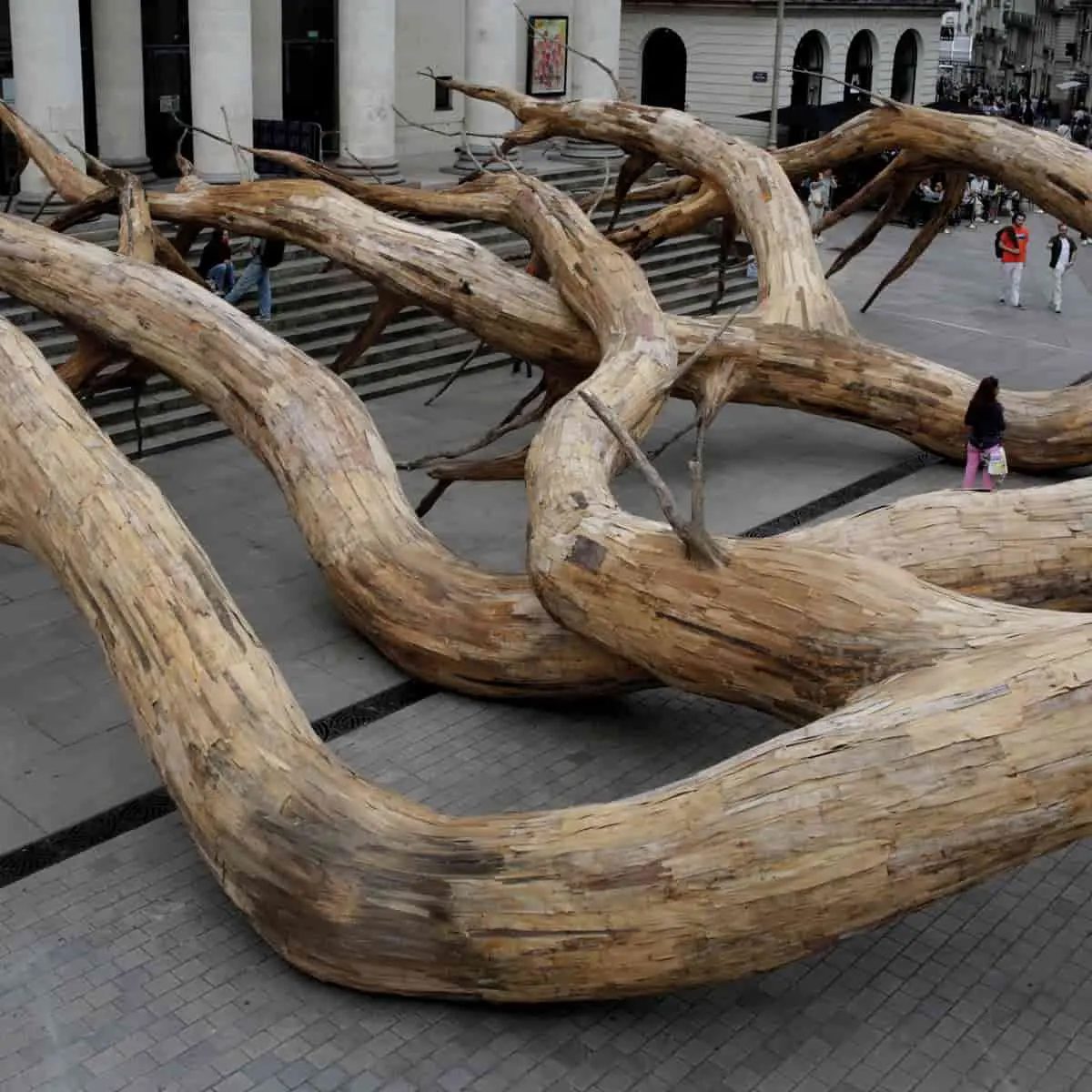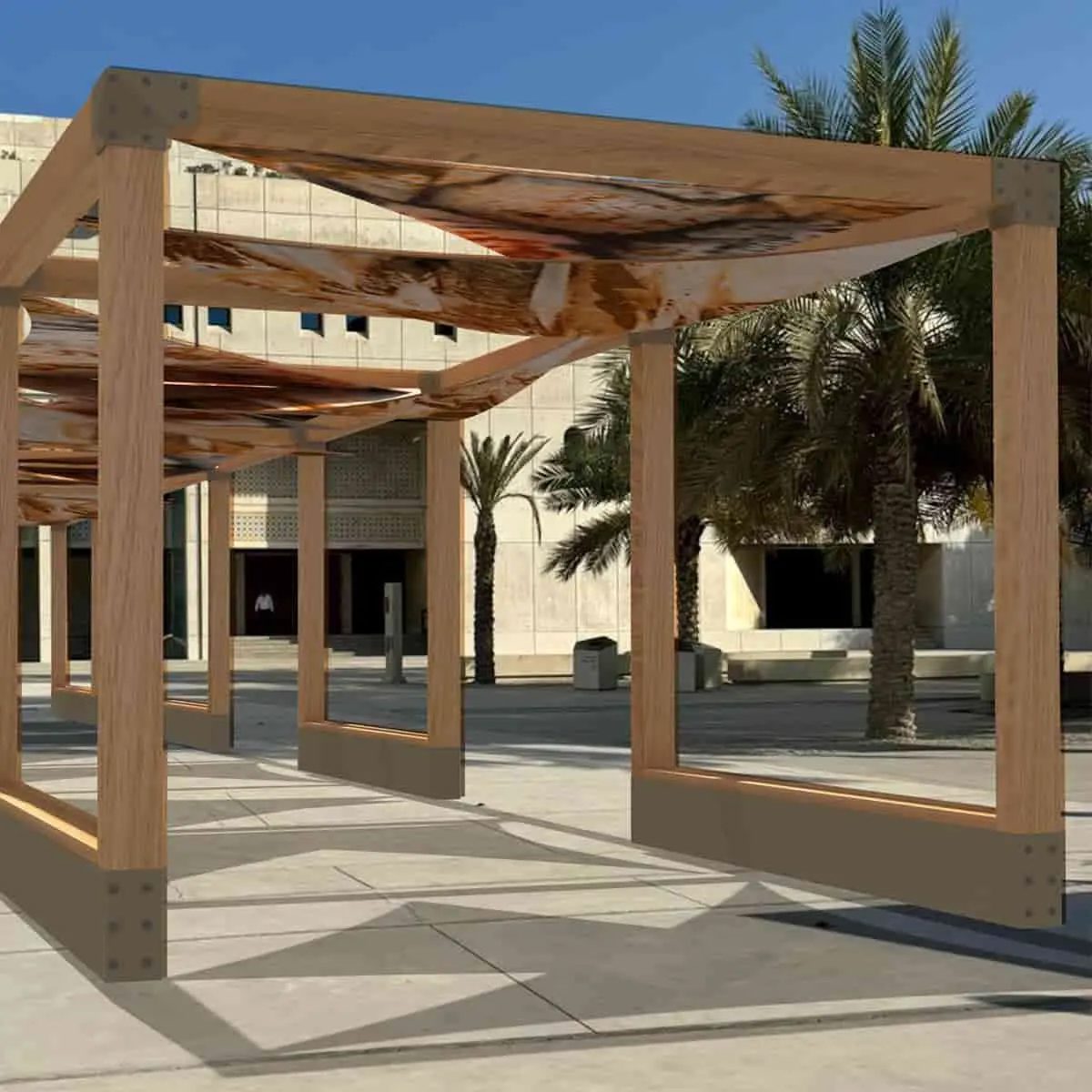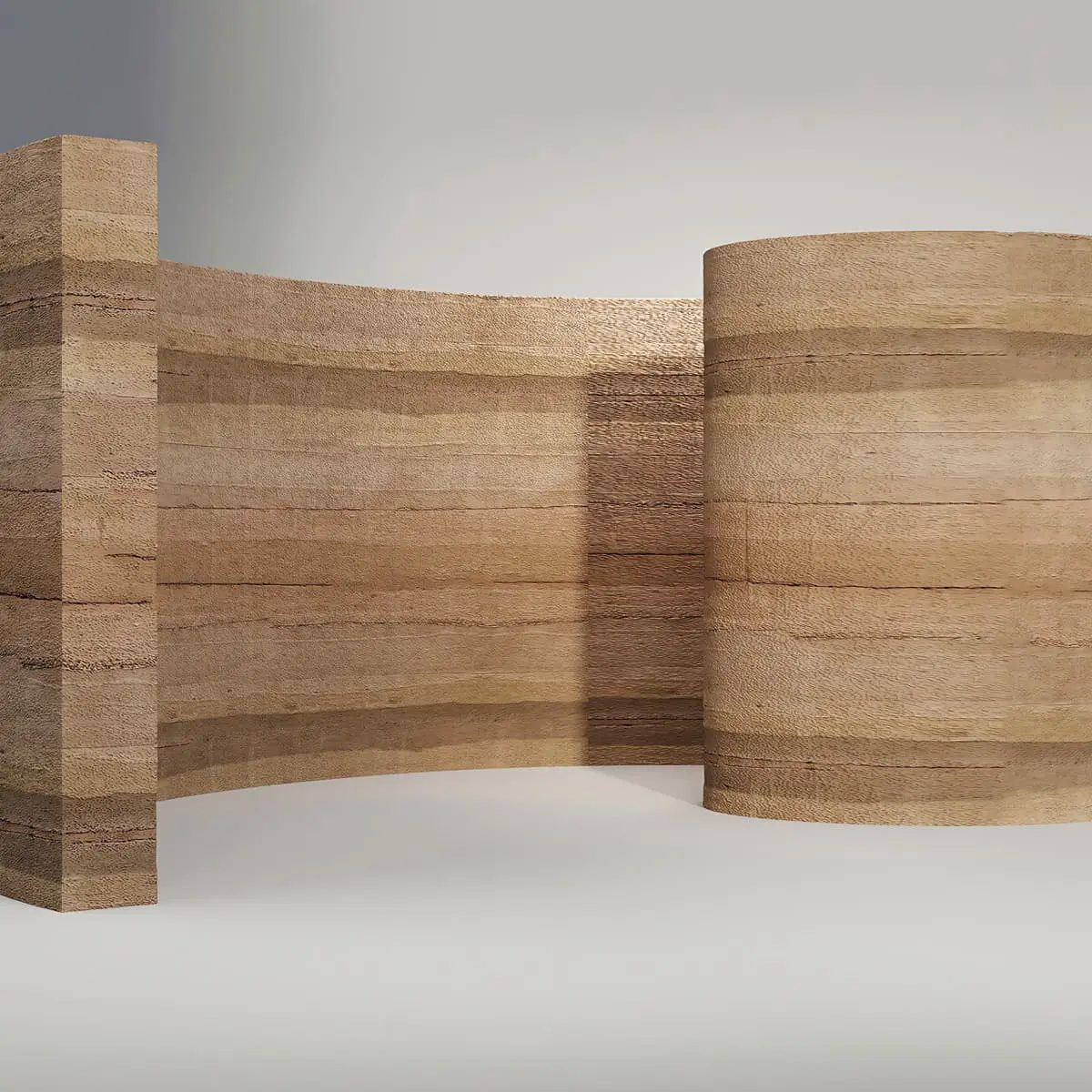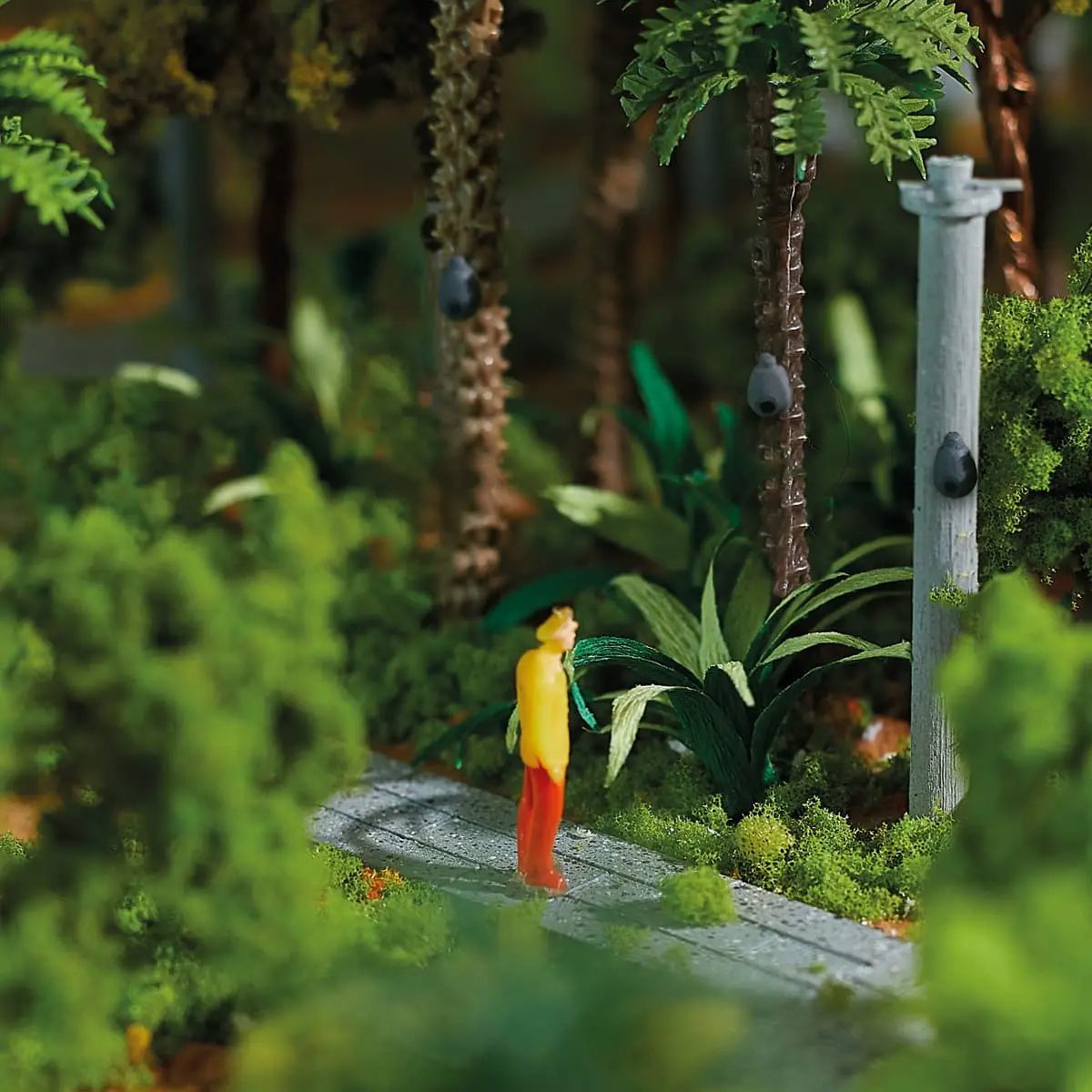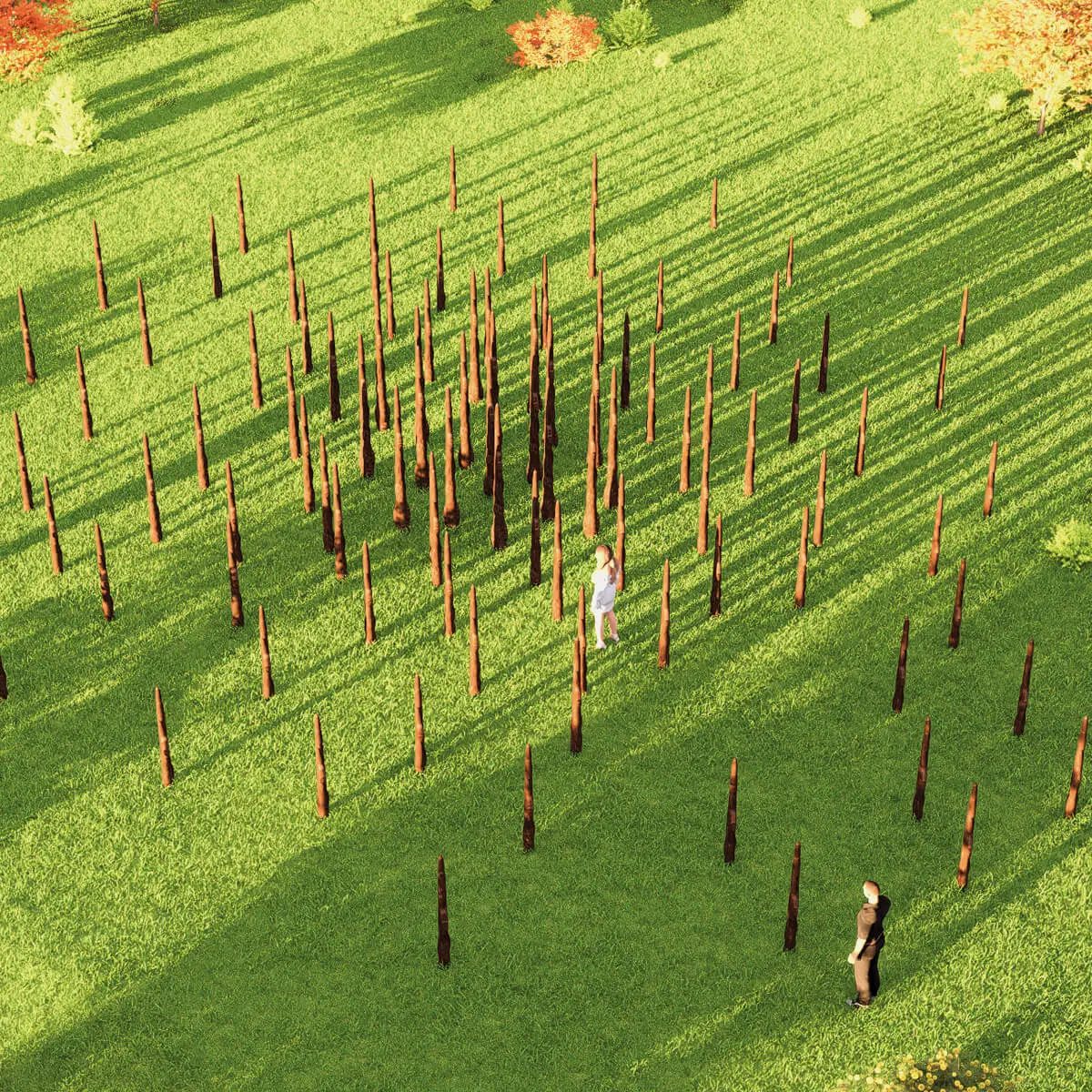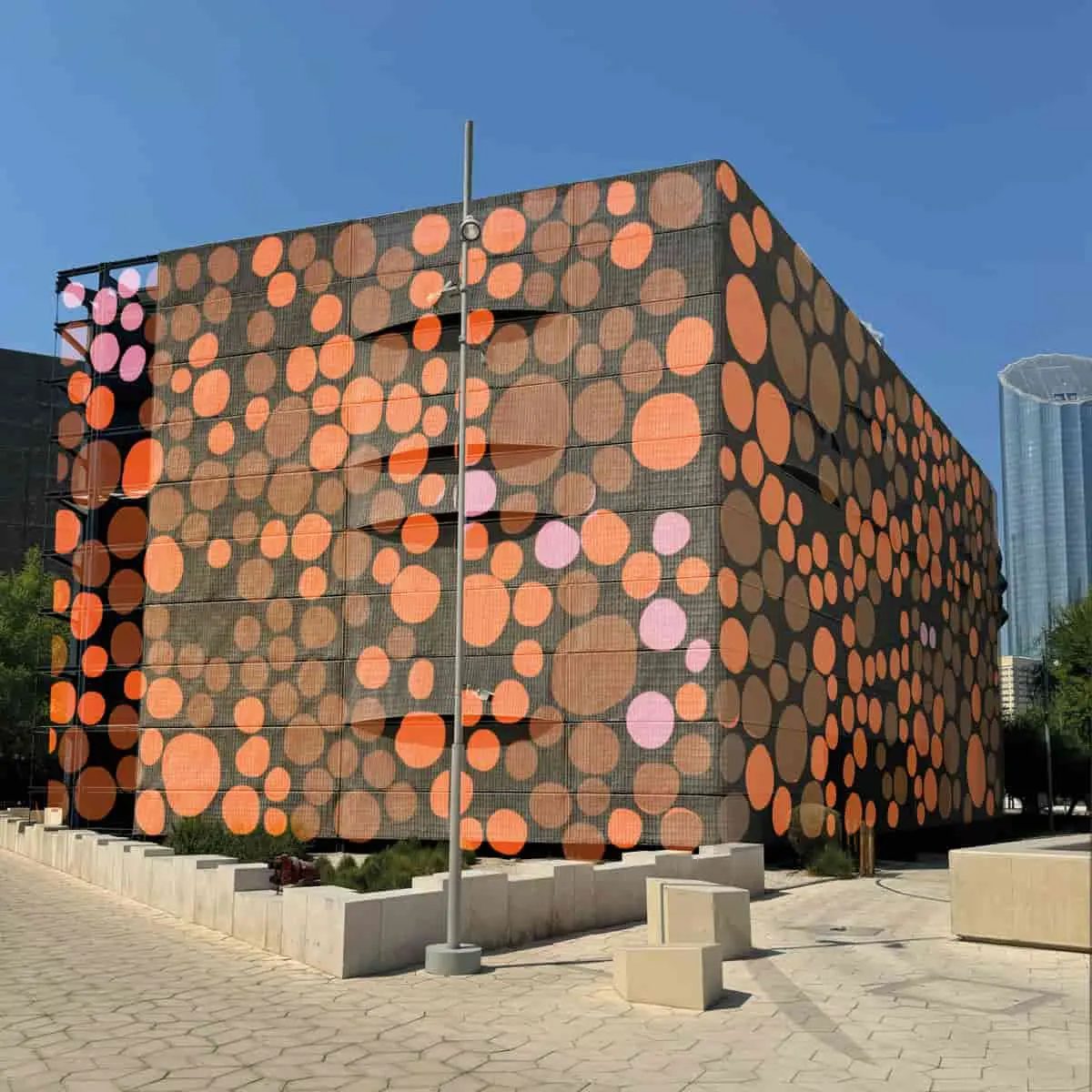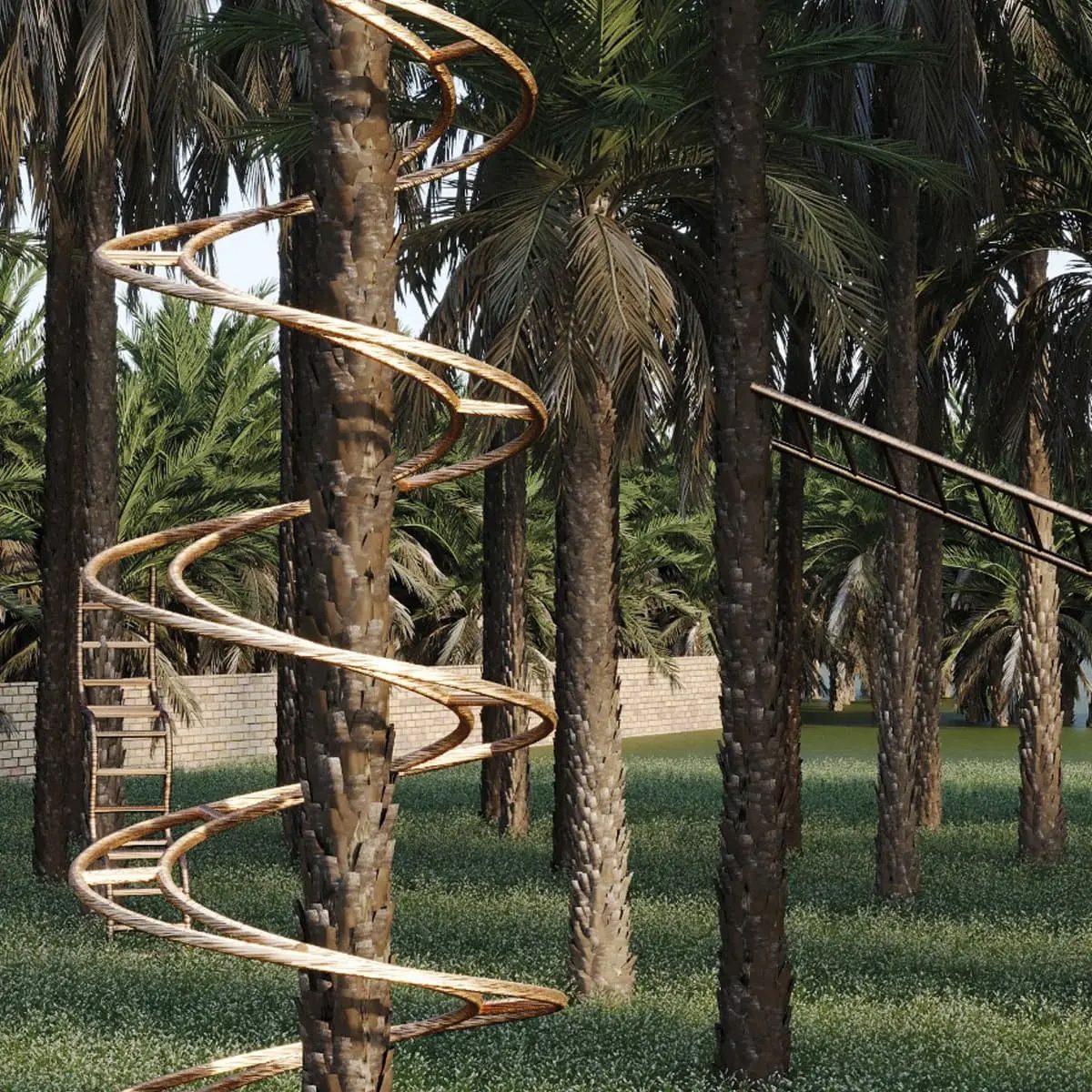BIENNALS: Public Art Abu Dhabi Biennial 2024–2025
![]() The inaugural “Public Art Abu Dhabi Biennial 2024–2025: Public Matter” explores the evolving concept of public space in Abu Dhabi through the lens of four main factors: environment, community, urbanity, and indigeneity. The Biennial investigates how environmental conditions influence gathering places and interactions, and how they define what is considered public space. It examines the interplay between the city’s modern development and its indigenous practices, addressing the challenge of preserving traditional values amid urban growth and economic diversification.
The inaugural “Public Art Abu Dhabi Biennial 2024–2025: Public Matter” explores the evolving concept of public space in Abu Dhabi through the lens of four main factors: environment, community, urbanity, and indigeneity. The Biennial investigates how environmental conditions influence gathering places and interactions, and how they define what is considered public space. It examines the interplay between the city’s modern development and its indigenous practices, addressing the challenge of preserving traditional values amid urban growth and economic diversification.
By Efi Michalarou
Photo: Public Art Abu Dhabi Biennial Archive
Located in downtown Abu Dhabi and Al Ain, “Public Art Abu Dhabi Biennial 2024–2025: Public Matter” aims to bridge the city’s past and present, featuring public art that engages the community and enhances walkability. Key highlights include the Abu Dhabi Bus Terminal, noted for its unique architecture and role as a community hub, and Al Ain’s pre-petroleum architectural heritage, including traditional mud-brick housing and lush oases. The event promotes inclusivity and invites artists to contribute to a deeper understanding of public spaces and their cultural significance. Among the artworks Oscar Murillo’s “A 1% offering: collective messages to our ancestors” (2024) is a collaborative mural covering 1 per cent of Abu Dhabi’s Corniche with large black linen sheets, inspired by Monet’s “Water Lilies” and themes of struggle and migration. The massive structure offers a moment of reflection, symbolising Abu Dhabi’s connection to the sea and fast-paced development. Alex Ayed focuses on sculpture and installation, exploring displacement, personal journeys, and the intersection of the real and imaginary. “Untitled (Beit el hmam I)” (2023), a monumental sculpture crafted from olive wood, clay, straw, and lime, denotes the vernacular architecture of the southern Mediterranean region. Merging past and future, science fiction and reality, it functions as a dovecote (house for pigeons) and converges history and imagination. Using materials tied to the Mediterranean, Ayed highlights the resilience of regional practices amid globalisation. The sculpture gestures towards the continuity and cohabitation between humans, non-humans, and their environments, where birds, traditionally messengers, carry stories across generations. Nathan Coley examines the intersection of public space and personal, social, and political beliefs. His three illuminated text-based installations in Abu Dhabi invite reflection on the spaces they inhabit. A Place Beyond Belief (2012) at Lake Park near the former Café Layali Zaman encourages contemplation on Abu Dhabi’s evolving identity embracing diverse cultures. “The World Without; The World Within” (2024) in downtown Abu Dhabi draws on Patrick Geddes’s concept of internal thought driving external action. In Al Ain Oasis, “You Create What You Will” (2014) invokes human imagination as a force for shaping the future. Rawdha Al Ketbi repurposes abandoned objects to examine themes of time, decay, and transformation. “Al Gaidh” (2024), an installation in Al Ain Oasis, explores the cyclical relationship between nature and growth, inspired by ancestral traditions and the life-sustaining water that nurtures palm trees. Rising copper ladders intertwine with the trees, symbolising growth and the passage of time, while coloured patina from oxidation symbolises transformation, reflecting the resilience inherent in nature. Nnenna Okore’s work lies at the intersection of visual art, ecological research, and sustainable materials, addressing environmental issues through biodegradable mediums. “Let’s Not Wait to Fill Our Cups with Time” (2024) reflects on Abu Dhabi’s rapid development over the past fifty years, with hundreds of colourful hessian circles stitched together across the southeast façades of the House of Artisans, symbolising that progress is achievable with thoughtful use of time while celebrating sociocultural diversity. Nicholas Galanin, of Tlingít and Unangax̂ ancestry, uses multidisciplinary art to connect with his cultural heritage. “In every language there is Land / En cada lengua hay una Tierra” (2024) reuses US–Mexico border wall steel tubing to spell ‘LAND’ in the style of Robert Indiana’s LOVE, with a layered structure that alternates between legibility and abstraction. Presented in English and Spanish, the work comments on Indigenous resilience amid imposed languages and borders.
Farah Al Qasimi’s practice spans photography, video, performance, and installation. “Homesickness” (2024) presents a physical and auditory sculpture that honours the rich tradition of pearl diving that has influenced the economic and cultural landscape of the Emirates. Five large oysters in a circular formation each conceal speakers that emit a chorus of synthetic voices for which the artist has made a composition based on a chant sung by the wives of pearl divers (‘Tob, Tob Ya Bahar’). The placement on the Abu Dhabi Corniche holds personal and cultural significance, reflecting Al Qasimi’s experiences with local public art. The iridescent paint and colour-changing LED lights bring contemporary technology to the traditional subject, engaging with the ocean’s historic significance. Seema Nusrat’s “Floating Fragments” (2024) installation in Abu Dhabi’s Corniche Lake explores urban life and the increasing risks of flooding due to climate change. Depicting a terracotta-roofed house submerged by an imagined flood, it symbolises the threat that urbanisation poses to heritage, inviting viewers to reflect on the balance between development and preservation. Allora & Calzadilla, the collaborative duo of Jennifer Allora and Guillermo Calzadilla, create experimental works that merge performance, sculpture, and sound, fostering meaningful encounters through a critical art-historical perspective. “Chalk” (2024) features monumental chalk blocks near the end of Abu Dhabi’s Formal Park where children play. Visitors can break the blocks into smaller pieces to express their individuality collectively through writing or drawing, or leave them unchanged, conveying other forms of exchange—from the monolithic to the intimate. The ephemeral nature of chalk marks mirrors the fleeting quality of communication, echoing the transient dynamics of public life in Abu Dhabi. Emily Jacir is an artist whose poetic and political practice investigates silenced histories, exchange, and transformation. For “cenotaph” (2024), she is collaborating with the Abu Dhabi municipality to revitalise the abandoned Sas Al Nakhl graveyard for foreigners, closed in 2012. This project includes landscaping, a cenotaph, and the restoration of graves, many of which hold infants from a period of increased maternal death. Reflecting on the loss of trees due to root disturbance, Jacir incorporates demographic studies by scholar Athol Yates of Khalifa University, Abu Dhabi. As the city modernises at pace, the work underscores the importance of preserving historic sites, transforming the graveyard into a public space of remembrance. Majd Alloush is a multidisciplinary artist whose practice crosses geographical borders to explore themes of war, displacement, and environmental destruction. “Buffer” (2024) draws inspiration from the UAE’s mangrove forests with structures embedded in the landscape that resemble their intricate root network and resonate with their role in protecting ecosystems from erosion and natural forces. The structures absorb ambient sound, a buffer to dampen noise from the urban environment as one embarks on a sensory journey through the thicket. The central and tallest component of the work represents the mangrove tree, its distinctive colour separating it from the rest. Paweł Althamer’s “Tentarium” (2024) invites visitors into a cat-shaped tent where they can draw and paint on its interior, while his bronze sculpture Ari (2024) features an anthropomorphic cat, celebrating Abu Dhabi’s stray cats. This evolving artwork celebrates creativity across cultures and age groups, encouraging public engagement. Mircea Cantor is an artist whose practice spans film, sculpture, installation, photography, and drawing. “Aquila non capit nuscas” (2018), meaning ‘the eagle doesn’t catch flies’ takes up the confrontation between nature and technology. Displayed on a 4D screen atop Abu Dhabi’s Cultural Foundation, the film captures a golden eagle’s flight in high-definition slow motion. The ancient symbol of power encounters a drone, representing modern surveillance and intrusion. Territory and control come to the fore as natural instinct collides with technology, reimagining the bird’s-eye view in moving from biological to technological dominance amid increasing drone monitoring. The ambiguous outcome questions which force will prevail—the ancient or the modern.
Participating Artists: Abdullah Al Saadi, Afra Al Dhaheri, Alex Ayed, Alia Farid, Allora & Calzadilla, Anga Art Collective, Arquitectura Expandida, Athar Jaber, Azza Al Qubaisi, Bik Van der Pol, Christopher Joshua Benton, Daniel Buren, Eddie Clemens, Eko Nugroho, Emily Jacir, Farah Al Qasimi, gubuyoBand, Hashel Al Lamki, Henrique Oliveira, Hussein Sharif, Kabir Mohanty, Kader Attia, Khalil Rabah, Latifa Saeed, Lawrence Abu Hamdanμ Load na Dito, Lúcia Kochμ Majd Alloush, Mircea Cantor, Mobile Akademie Berlin, Mohamed Al Astad, Mohammed Al-Hawajriμ Nathan Coley, Nicholas Galanin, Nnenna Okore, Oscar Murillo, Paweł Althamer, Radhika Khimji, Rami Kashou x Emirati Artisans, Rand Abdul Jabbar, Rawdha Al Ketbi, Remote Abu Dhabi / Al Ain by Rimini Protokoll, Sammy Baloji, Seema Nusrat, Shaikha Al Ketbi, Sophia Balagamwala, SUPERFLEX, Tania Candianiμ Tarik Kiswansonμ UT-R Studioμ Wael Al Awarμ Wael Shawkyμ Yeesookyung, Zeinab Alhashemi
Photo: Farah Al Qasimi, Homesickness, 2024, Aluminium, speakers, Commissioned by the Department of Culture and Tourism – Abu Dhabi for the Public Art Abu Dhabi Biennial 2024–2025, Courtesy of the artist
Info: Public Art Abu Dhabi Biennial 2024–2025, Abu Dhabi, United Arab Emirates Duration: 15/11/2024-30/4/2025m Venues& Hours: Al Ain Oasis, Daily 9:00-17:30. Hili Archaeological Park Daily 9:30-18:30, National Theatre 10:00-22:00, Umm Al Emarat Park Daily 9:00-17:30, Biennial Hubs and Ushers mon-Thu 16:00-22:00, Fri-Sun 12:00-00:00, Biennial Shuttle Bus Mon-Thu 16:00-22:00, Fri-Sun 14:00-12:00, https://paad.ae/biennial
